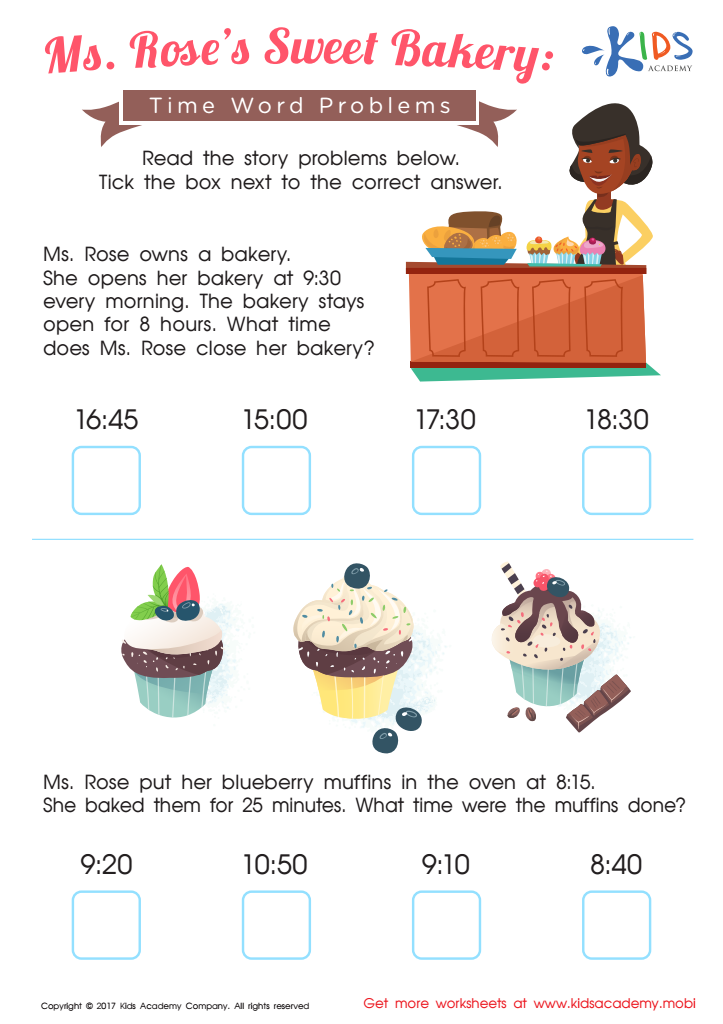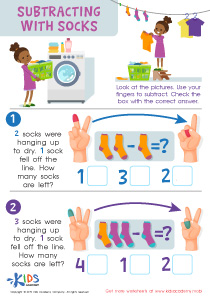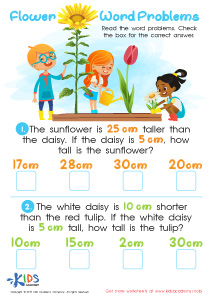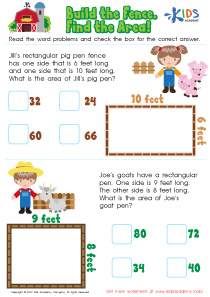Time Word Problems Worksheets for Ages 3-5
1 filtered results
-
From - To
Introduce your little learners to the concept of time with our engaging Time Word Problems worksheets! Designed specifically for children aged 3-5 years, these homeschool worksheets provide a fun and interactive way to grasp the basics of telling time. Through a variety of thoughtfully crafted activities, your preschoolers will learn to read clocks and understand daily routines, enhancing their early math skills. Each worksheet is tailored to stimulate young minds and foster an early love for learning in a homeschool setting. Prepare your child for success in more advanced concepts with these essential early education tools. Perfect for at-home learning!


Ms. Roseв's Sweet Bakery Time Worksheet
The Value of Time Word Problem Worksheets in Early Childhood Education: A Spotlight on Homeschool Printables
In the formative years of a child's academic journey, understanding the concept of time not only enriches their cognitive abilities but also enhances their everyday life skills. For children aged 3 to 5 years, who are often bursting with curiosity and an eagerness to learn about the world around them, homeschool printables focusing on time word problems offer a unique blend of education and engagement. Here’s why these resources are incredibly useful in early childhood education.
Foundation of Time Awareness
Time word problems help young learners grasp the fundamental aspects of time, such as hours, minutes, and the sequence of daily events. This early exposure lays a strong foundation for time management skills that are crucial throughout life. By using homeschool printables tailored for ages 3 to 5, parents and educators can introduce these concepts in a fun and age-appropriate manner, ensuring that learning becomes a joyous and less daunting endeavor.
Development of Mathematical Thinking
Worksheets on time word problems are not just about learning to read the clock—they are also about solving problems that involve logical thinking and basic arithmetic. For instance, determining the length of time until a certain activity or calculating how long a specific task lasts. These activities encourage young learners to apply mathematical concepts to real-life scenarios, promoting a deeper understanding and retention of the information taught.
Enhancing Language Skills
Time word problems require reading and comprehension skills, as children need to interpret the problem before they can solve it. Homeschool printables designed for young learners often use simple, engaging language to help children improve their reading skills. Furthermore, discussing these problems with parents or peers can boost their vocabulary and oral communication skills, pivotal at this developmental stage.
Boosting Confidence and Independence
The ability to understand and manage time effectively is empowering for young children. As they improve through practice with worksheets, their confidence in making decisions about time—like determining how long they can play before dinner or how soon they should get ready for bed—also grows. This autonomy in managing small portions of their day can have profound effects on their overall self-esteem and independence.
Customizable Learning Tools
One of the major benefits of homeschool printables is their adaptability. Parents and educators can choose worksheets that align perfectly with the learning pace and interests of their child. Worksheets can be themed around seasons, holidays, or even favorite cartoon characters to make the learning process more relatable and engaging for young learners. This customization not only keeps children interested but also helps integrate learning seamlessly into daily life without making it feel forced or overly academic.
Interactive and Fun
Homeschool printables often include colorful illustrations and interactive elements like cut-outs, matching games, and puzzles. These features make learning about time a playful experience. Children are naturally drawn to play, and when education adopts this form, the learning becomes more impactful and memorable. For example, a worksheet might include a game where a child has to match different activities with the appropriate time of day, or arrange a series of events in the correct order.
Facilitates Routine Development
Regularly using time word problem worksheets can help young children develop a sense of routine. As they begin to understand time concepts, they can also start to appreciate the structure of their daily activities. This awareness is crucial as it helps children adjust to formal schooling environments where schedules and timeliness play significant roles. Homeschool printables can introduce children to these concepts in a non-pressurized way, making the transition to school smoother and less intimidating.
Parent-Child Interaction
Another significant advantage of using homeschool printables is the opportunity they provide for parent-child interaction. Working together on worksheets not only strengthens the bond between the child and the parent but also allows for immediate feedback and support. This interactive approach to learning ensures that children understand the concepts being taught and feel encouraged to ask questions and express their thoughts, further enhancing their learning process.
Preparation for Future Academic Success
Early mastery of time concepts through engaging worksheets prepares children for more complex mathematical and life skills tasks they will encounter in school. It familiarizes them with the idea of solving problems, meeting deadlines, and planning ahead, all of which are important for academic and personal success.
Conclusion
Time word problem worksheets are more than just educational tools; they are gateways to developing a range of skills that extend beyond the classroom. For young children aged 3 to 5, these homeschool printables serve as critical building blocks that support not only their cognitive development but also their personal growth and independence. Integrating these fun, engaging, and educational resources into a child’s daily home education ensures a balanced approach to learning that fosters both academic ability and life skills. In doing so, parents set the stage for a lifelong love of learning and a robust foundation for future success.

 Assign to the classroom
Assign to the classroom











